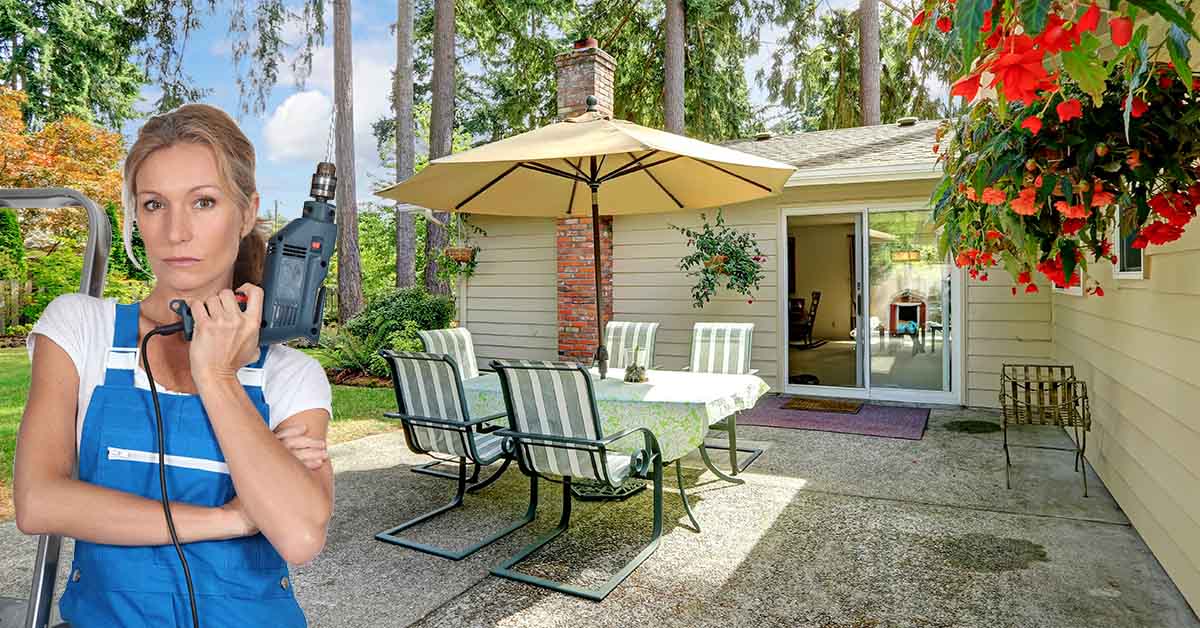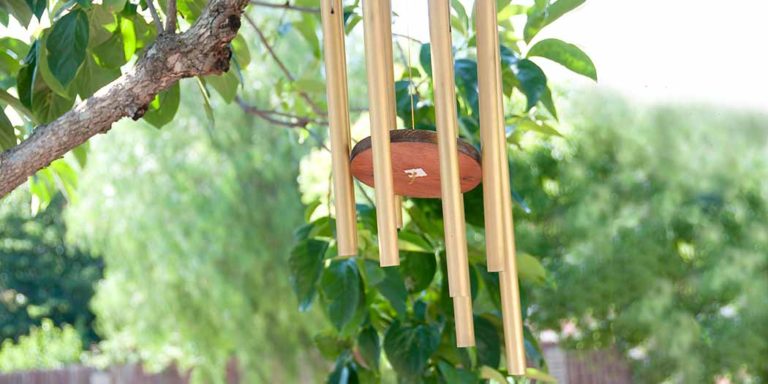9 Tips on How to Keep Your Patio Umbrella From Spinning
A patio umbrella makes a day when enjoying the backyard. But if your umbrella just spins around, no matter how tight you pull the knob, it can be pretty frustrating.
The thing is, there are times when your umbrella will begin turning and moving around, and this can be annoying.
A spinning umbrella can be dangerous because it increases the odds of having it fall over and hit someone or even become damaged in the process.
Fortunately, there are things you can do to prevent your patio umbrella from circling and making a sound. Here are a few tips on how to keep the patio umbrella from spinning.
1. Quick Fixes for the Base
Especially with older umbrellas, the tightening knob that holds the umbrella pole in the stem can become loose, and this can cause the umbrella to start spinning.
General wear and tear can cause the knob to loosen up over time.
If there is too much wear and tear, tightening the knob doesn’t solve the problem (you’ve probably already tried to tighten it many, many times).
The screw just goes against the pole, and if there is not enough friction left, there is no point in breaking it by tightening too much.
You can try these DIY tactics to tighten the pole in the stem:
Popsicle stick method: Add something between the stem and the pole for better grip. First, loosen the knob completely. Slid a shim, a small piece of wood like a popsicle stick, into the groove. Try to position it where the screw goes against the pole. Now you can tighten the knob, hopefully having enough friction to prevent the umbrella from spinning.
Bolt and nut method: Another option is to drill holes through the stem that holds up the umbrella pole. Then tighten screws in those extra holes. Because the screw now goes into the pole rather than just against it, it prevents spinning.
Fix the stem: The stem is typically attached to the base with the big screw from the bottom. Here, you have the same problem as with the knob. General wear and tear can cause the screw that holds the stem in the base to loosen up.
2. Buy a Cone Wedge
Cones, or cone wedges, are small rubber devices that you place on the umbrella shaft.

You’ll then connect the wedge to the umbrella itself and the table, where it will be wedged between the gap already there.
The gap is now covered by a cone wedge, so the patio umbrella will remain steadier and more firmly in place.

The cone wedge essentially stabilizes the umbrella so that it doesn’t have a chance to move around as much, preventing it from spinning at that point.
3. Make Sure the Table Rings Are Appropriate
Many patio umbrella tables come with plastic rings placed around the hole’s opening.

These rings wear out over time, even cracking and becoming useless. If you don’t want to add a cone wedge to your umbrella, buy new rings for the umbrella instead.
When table rings are rendered useless, there is a good chance that your umbrella will eventually start to spin.
Again, cone wedges work better in these instances, but you can always replace the rings first to see if that takes care of the problem.
4. Always Buy the Right Base
Once again, the base of your patio umbrella is essential because this is what holds the umbrella in place day after day.
The weight of the base is number one when you are figuring out how to prevent your patio umbrella from falling. A tightening knob in the stem of the base keeps it from turning.
One of the most important things to look for is the size of the hole in the base. Simply put, you need one that is just big enough for the pole to fit inside of it without it being too tight or too loose.
If the pole is too loose, the odds of the umbrella spinning or even toppling over is much greater. That’s the last thing you want to happen while you’re outside enjoying your patio furniture.
5. Secure the Base to the Ground
If you have a lot of windy weather, it’s a good idea to drill holes in your patio floor and secure the base to the floor so that it cannot move around.
Patio umbrellas typically have a base to set the pole in, and if you screw or nail that base to the patio floor, it will not get loose in the future.
The only bad part about this option is that the patio umbrella is permanently attached to your patio floor. It will be difficult to change its location in the future.
6. Choose a Stronger Frame
The frame associated with your patio umbrella can be strong or not so strong, depending on what it’s made of.
You’ll want to get a super sturdy frame and a little on the heavy side so it can withstand windy and inclement weather and remain more upright. A sturdy frame can be expensive, but it is always worth it in the end.
Look around to get the right type of structure, and try to choose one that has a painted coat, so it’s both easier to clean and less likely to rust in the future.
7. Add Some Weights to the Structure
As a general rule, you’ll need about 10 pounds of base weight for every foot in diameter that your umbrella measures.
For instance, if your umbrella measures 10 feet in diameter, the weight of the base should be a minimum of 100 pounds.
That being said, if the manufacturer recommends a different number, go by that number instead.
Keep in mind that this is a minimum number – you can always make the base heavier if you like, which is crucial if you live in a very windy area.
8. Keep the Umbrella Closed Whenever Possible
A patio umbrella should remain closed with the attached straps whenever you aren’t sitting underneath it.
This means the umbrella should stay in a closed position at night, as well as during the day when you’re not using it. Make sure the straps themselves are wrapped tightly around the umbrella, and they aren’t starting to come loose.
An umbrella that is closed firmly will not have the chance to spin, become loose, or topple over at some point.
If your patio umbrella gets damaged, it can be a hassle to fix. We have another article on how to fix a patio umbrella yourself.
9. Fix for Cantilever Umbrella
Free-standing cantilever umbrellas require a heavy, weighted base to hold the umbrella upright. But that doesn’t prevent them from spinning.
There is a bungee cord method for preventing cantilever umbrellas from spinning. Just stretch the cords around the pole and to the end of the rib arms.
Be careful not to damage your umbrella by stretching too hard.
The Bottom Line
Patio umbrellas can start to spin for numerous reasons, with the most common reason being that the hole in the table is too large for the pole’s size. If the pole is smaller than the table hole, the umbrella is more likely to start spinning.
A spinning umbrella can also cause loud noises and even scuff marks, which no one wants.
Fortunately, you can do practical, simple, and inexpensive things to remedy the situation. That way, you can go back to enjoying your time sitting on the patio with a nice umbrella to make the experience even more pleasant.
Read more: Tips on how to choose the right patio umbrella on your deck


